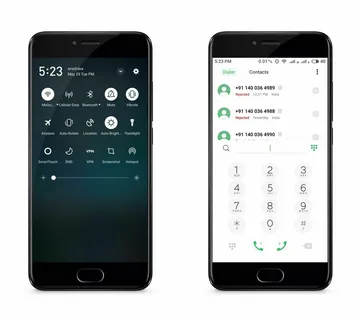Use AI Dialer in These 4 Ways to Scale Your Outbound Call Center

If you want to scale your call center’s outbound operations, artificial intelligence (AI)dialer can help you a lot. This is particularly useful for call centers in areas such as health insurance.
For example, the insurance industry often scales its reach around enrollments opened each year. Since this is a busy time of year, call centers need to work efficiently and even more efficiently when registrations are open.
AI dialer supports part of the outbound workflow to help your team work at peak efficiency, even during high business engagements.
What does AI look like for call centers?
In recent years, artificial intelligence has been applied in many ways, such as:
Voice search (“Hey, Siri!”) On your phone or smart speaker
Chatbot to provide customer support
Personalized recommendations through machine learning (Netflix recommendations)
For your call center, AI is very useful as a machine agent who can have personalized voice conversations. This is called conversational AI. Use speech recognition software to read voice strings and classify responses based on responses. Find the AI that interacts with:
1 A real human voice is use in his recording
2 Natural language programming
3 Machine learning
4 Advanced speech recognition
5 Fluid recording of responses
How to use voice AI in your call center?
Whether you’re selling real deals or real-time transfers, conversational AI boosts your call center’s efficiency. This is mainly due to the fact that agents are no longer required to pre-qualify leads. A conversational AI agent asks initial questions and sends only qualified contacts to human agents.
Here are four ways to use a conversational AI dialer for the max benefit:
1 Filter out unqualified leads.
Conversational AI takes pre-qualifications from your agents. It asks your initial questions and records and updates lead data based on the responses it receives. From there, it only streams qualified leads to live agents.
It also instantly recognizes leads with invalid phone numbers or missing information, so agents don’t have to spend time verifying lead validity.
As a result, your agents are more productive, happier, and more likely to convert their calls.
2. Stop the first 60-90 seconds of agent calls.
Imagine spending your time selling, and having meaningful conversations with your agents. Your call center conversion rate and success will increase significantly.
Usually, however, representatives spend the first minute of each conversation asking appropriate questions. That time is running out fast: We all know your agents want to make a few calls every day, every week, and every three months. Over time, reducing one minute per call can change the output of your entire sales team.
The AI can have conversations that ask the agent the right questions. Then, as it passes the vehicle, it can pick up where the AI left off. This is especially true when AI uses recordings of real human voices rather than computer-generated ones. Conversations sound natural and friendly rather than robotic. As a result, it feels seamlessly delivered to a live agent.
3. Reduce manpower and training costs.
A survey by The Bridge Group found that 46 percent of executives see productivity as one of their biggest challenges. Software and training are two important ways to increase agent productivity.
With your software AI, your agents can focus on converting qualified leads. They don’t need to waste valuable time searching, pre-screening, or having ineffective conversations.
As a result, you can hire fewer and more effective agents and generate more conversions. Each agent can operate with maximum efficiency. And your business can potentially reduce labor costs.
You can also save on training costs. As agents focus less on pre-qualified leads, training for this element is reduced. Check out our guide to training outbound call center agents here.
4. Filter and forward incoming calls to agents through AI.
Call centers have less control over incoming calls. It’s difficult to determine how qualified an incoming call is before reaching an agent.
Conversational AI can identify incoming calls and determine if the caller is an existing lead. It can then direct the caller to the correct location. For example, when a caller gets in touch for the first time, AI can answer the call and make an initial inquiry. However, if the caller is also an existing qualified lead on your system, AI can route them to an agent.